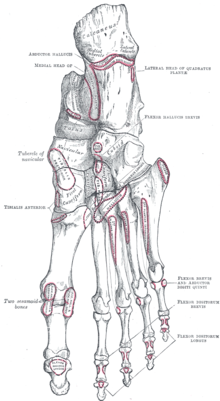Digit
/dɪdʒʌt/
1. [noun] most simply put, a finger or toe. In anatomy, digit, refers to the fingers or toes of the skeleton that consists of small bones called phalanges. Theses digits are numbered one through five beginning with the thumb when the palm is placed face downward. See: https://www.medicinenet.com/script/main/art.asp?articlekey=11176 ; Accessed May 28 2019 For an excellent review of anatomical terminology see: https://opentextbc.ca/anatomyandphysiology/chapter/1-6-anatomical-terminology/ ; Accessed May 28 2019
Source: https://www.medicinenet.com/script/main/art.asp?articlekey=11176

Frequently Asked Questions
How does understanding foot digits help in everyday descriptions of foot movements?
Knowing that digits are the toes and their bone structures can simplify conversations about balance, alignment, and movement, such as when explaining how the foot adapts while walking or standing.
What is a common misconception regarding foot digits that people often have?
A frequent misunderstanding is that toes are merely decorative. In reality, each digit plays a vital role in providing balance and helping distribute weight during activities like walking or running.
Can the Latin roots of the term 'digit' aid memory in foot anatomy discussions?
Absolutely. The Latin word 'digitus', meaning finger or toe, reminds us that despite different positional functions, our hand and foot digits share a similar structural importance.